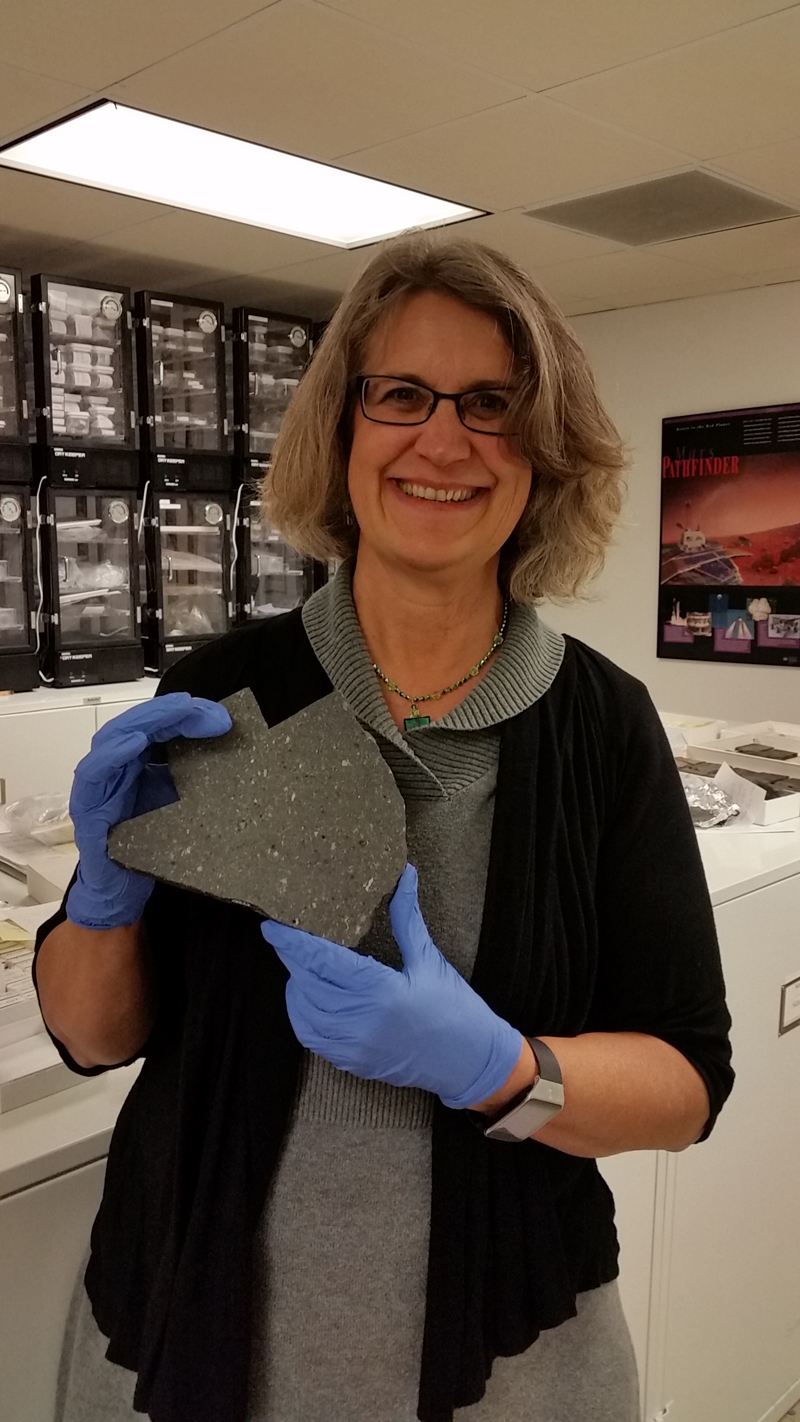
On April 10, 1978 Betty Adrian began her USGS career. She was hired as a geologic field assistant to assist in the collection of samples that would help determine the mineral resource potential for metallic minerals in the Wallace 1° x 2° quadrangle, Montana and Idaho. She was a member of a branch that was organizationally located in the Geology Division, Office of Mineral Resources. What was supposed to be a summer appointment turned into a 38-year career! After the first summer of field work Betty prepped samples and then learned the science (and art) of optical emission spectroscopy. She also learned how to drive "the dually" and began pulling a fifth wheel trailer that contained her spec instrument at the age of 23.
Betty became a "Jane of all trades" while working in the "spec lab" fifth wheel. She was the plumber and electrician when she took the fifth wheel trailer to the field. Locations of this fieldwork were Lone Pine, California; Mt. Shasta, California; and Lake Havasu City, Arizona. In 1988 Betty's team moved to Building 20 at the Denver Federal Center. She continued to work in the chemistry lab but by 1989, she realized she preferred working with people rather than rocks and chemicals. It was at that time that she enrolled in Regis College's new Master of Science in Management Program. Her thesis, "Development and Implementation Plan of a New Organizational Design in a Government Chemistry Lab," was the framework that was used to make changes at the Branch of Geochemistry labs. One of her proposed options was to go from two lab chief positions to one. One of those lab chief positions was hers!
Betty found herself back working in the lab as a bench chemist but it wasn't too long and she was soon working with people (not chemicals!) as the Associate Branch Chief for the Branch of Geochemistry. The mid-1990s was a rough time for those who were in the Geologic Division (GD). Due to substantially reduced funding GD went through a reduction-in-force (RIF) and reorganization. Under the new post-RIF organization Betty went back to perform analyses on rocks. This only lasted for a while as she preferred working with people and not chemicals. Soon she was the Associate Team Chief Scientist of Operations for the Central Region Minerals Team. She oversaw the facilities (which included many labs), the computer group, and moved a lot of people in/out of the space. She helped renovate many offices and labs in Bldg. 20 in an effort to help scientists perform their jobs much better.
With opportunities comes challenges, soon this large team was too large and was divided into two smaller teams. Betty stayed on as Associate Team Chief Scientist for both of these teams. At that time she was the only person in GD who held the same positions in two different teams at the same time. In 2007 a new opportunity knocked on Betty's door. This time it was as the Core Research Center Director. This opportunity was seized and she moved up to Bldg. 810.
While she was in Bldg. 810 several other opportunities were placed in front of her. She seized these opportunities and eventually became the National Ice Core Laboratory Director and the National Geological and Geophysical Data Preservation Program Coordinator along with the Core Research Center Director. Betty has also become very active in the USGS collections-related efforts. In 2008 she chaired the Geologic Materials Repository Working Group that investigated and, ultimately, published the "The U.S. Geological Survey Geologic Collections Management System (GCMS): A Master Catalog and Collections Management Plan for U.S. Geological Survey Geologic Samples and Sample Collections". In light of all the federal mandates to appropriately preserve and make federal collections available to the public, Betty helped establish the USGS Collections Steering Committee. She was one of the first co-chairs of this very important committee. As a bench chemist for many years Betty analyzed and generated millions of analytical records. Now she was helping preserve samples and ensure the public could gain access to the data and samples.
Betty has thoroughly enjoyed the opportunities to work with so many people from very diverse backgrounds. She will take into retirement many things she learned during her 38-year career. She learned that it was far more important to work smart and hard, not just hard. She learned that if she didn't ask for something, she had already assumed the answer was "no". She learned to accept challenges as they can turn into great opportunities. She learned the importance of paying it forward. She will smile every time she and her husband, Ken, travel with their fifth wheel as she also learned how to back up fifth-wheel trailers as one of her tasks early in her 38-year USGS career! Never underestimate skills learned on the job. Many of those skills are transferrable – in your work or pleasure!
